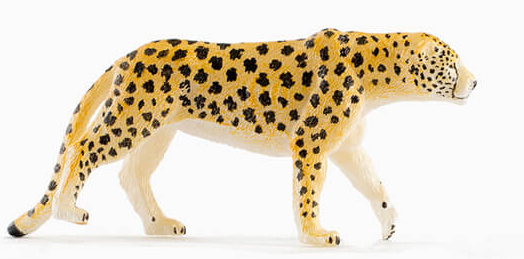Super Fast, Super Strong – Super Cheetah
The cheetah is recognised as the fastest land mammal with some of these speedy carnivores having been clocked at more than sixty-five miles an hour. Efficient predators they may be, but the African cheetahs around today would have been no match for a fearsome member of the cat family, whose 1.8-million-year-old fossils have been found in the Republic of Georgia. Cheetah fossils indicate a predator twice as heavy as modern cheetahs.
Although now confined to the continent of Africa, the cheetah along with a number of big cats were much more widely distributed in prehistoric times. Now scientists have uncovered the remains of the largest and most dangerous type of cheetah known from the fossil record, a super strong, super-sized predator most likely feared by those hominids unfortunate to have been around when this cat stalked south-eastern Europe.
A Model of a Cheetah
Cheetah Fossils
The ancient cheetah fossils were found at a 1.8-million-year-old site in Dmanisi in the Republic of Georgia, one of the oldest known sites for ancient human species out of Africa, where fossils of a sabre-toothed cat and a similar scimitar cat had already been discovered before. What with the discovery of the prehistoric Cheetah fossils, this location is proving to be a rich hunting ground for palaeontologists trying to understand the evolution of the Felidae.
Based on its arm and paw bones, the stoutly built Cheetah (Acinonyx pardinensis) is believed to have weighed about 110 kg, about double the weight of its modern African cousin. The oldest Cheetah fossil known was a skull of Acinonyx kurteni found in China; the animal lived between 2.2 million and 2.5 million years ago, suggesting that these type of cats originated in Asia.
To read an article on the origins of the Cheetah: Cheetahs originated in the “Old World.
Published in a Scientific Journal
The research team that have studied the fossils of this “Big Cat”, write in the scientific journal “Quaternary Science Review”, that this particular predator lived in a savanna type environment with forests near by. It probably hunted on the open plains, running down prey just like its modern cousin. Scientists have discovered the fossilised bones of a number of potential prey animals including a number of different types of antelope.
Given their findings, the researchers conclude that this extinct cheetah likely thrived as a killer, with each cat downing an estimated 7,500 kg of prey a year, more than any other predator within its community. That’s the equivalent of 100 people every year, or two a week. It is likely that this predator did prey on our ancient hominid ancestors.
Commenting on this fossil find, researcher Ralf-Dietrich Kahlke, a palaeontologist at the Senckenberg Research Institute in Weimar (Germany) stated:
“I was really astonished by how much meat it could bring down.”
For models of prehistoric cats and other prehistoric mammals: Prehistoric Felids and Prehistoric Animals (Mojo Fun).







Leave A Comment